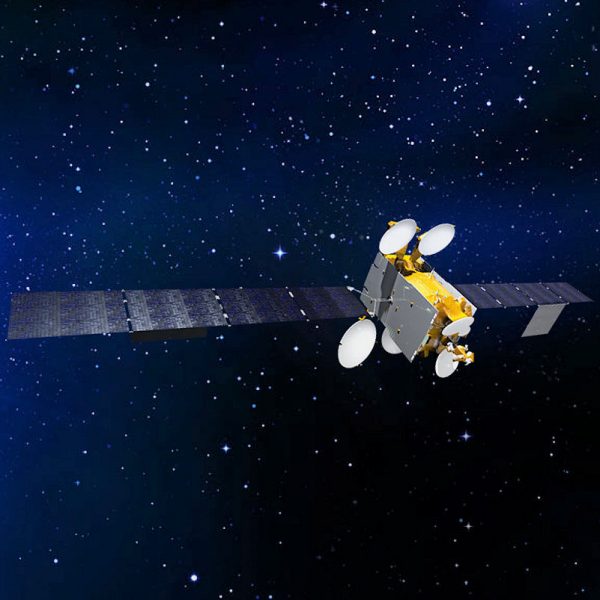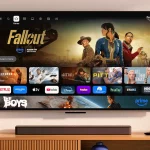XtndNet Reveal Price of Hybrid Satellite Broadband for UK Rural Areas UPDATE

Hybrid satellite broadband ISP XtndNet, which back in March 2022 claimed (here) it could help to reach remote rural parts of the UK with download speeds of 25Mbps by combining satellite technology with mobile broadband or fixed lines (ADSL), has shared the first pricing details and responded to other questions.
Just to recap. XtndNet is the product of three companies – Arabsat, Developing Infrastructure, and Forsway. The network itself will be primarily powered by Arabsat’s BADR-7 High Throughput Satellite, based on Forsway’s Xtend platform, and is “available now in the United Kingdom and Ireland” as part of a limited pre-launch beta product (Germany, Scandinavia, the Baltics, and Africa will follow in the next few months).
As we’ve said before, hybrid networks like this are nothing new and have been tried before. In short, the satellite handles the downstream side of the connection (useful for big files etc.), while the upstream side is done via a terrestrial service (better for latency).
Advertisement
In theory this sounds ideal, but in the past such services tended to be fairly expensive and were largely superseded by improvements in two-way satellites, as well as better terrestrial broadband solutions (e.g. FTTC now covers c.98% of UK premises). As such, in our prior article, we pondered whether XtndNet might be in danger of resurrecting a technological dead-end. We also noted that the BADR-7 satellite didn’t appear to cover the UK (here).
Nevertheless, Ofcom does state that – excluding satellite solutions – the number of premises that still cannot get a “decent broadband” (10Mbps+ download) service is now 0.4% or 123,000 premises, which is the figure you get back when including 4G and fixed line coverage. But if you only looked at fixed line solutions, it would be c.2% (651,000 premises). In other words, there’s still a gap, and it’ll take a fair few years to tackle.
XtndNet’s Product
Since the original article we’ve been able to put some of our questions to the CCO of XtndNet, Rob de Poorter, and have managed to secure some preliminary details on the eventual consumer product. At present the service is still going through beta testing, so some of these details may change, but they’re unlikely to end up being radically different.
Firstly, on the question of coverage, Rob informed us that the ISP will harness the UK ka/ka band Gateway Beam on BADR-7, which does appear to cover the vast majority of the UK. However, it’s worth noting that it doesn’t quite reach the South Westerly tip of Cornwall or the most North Easterly tip of Scotland (e.g. Thurso, Orkney and Shetland may be just out of reach).
Advertisement
The beta product (being tested around the East Sussex/Kent area) is currently being offered for free, including equipment and installation. But the final service is expected to be priced at around £25 per month for a satellite-only solution (i.e. it’ll combine with your existing broadband service) or £40 per month for a package that includes satellite and a standard terrestrial broadband connection via Openreach (we assume ADSL or very slow FTTC / VDSL2 lines).
Rob said the hardware (Forsway Modem, Satellite Dish + LNB + Cabling) would be offered to customers for “free“, albeit with the caveat that they’ll ask for a “deposit of £200 per installation” and the kit will remain XtndNet’s property (note: more complex installs may attract an extra cost). One catch here is that you’d need to return the kit when cancelling to get the deposit back, but removing and posting such kit isn’t cheap.
XtndNet is using Forsway’s hub and remote technology to provide its services. This is a hybrid satellite broadband extension connecting hard-to-reach regions. The Hub includes the Mimir Gateway, EMS and NMS functionality. The client premises equipment (CPE) / satellite modem is called Odin, which is designed to be low-cost, rugged, and with low power consumption (less than 1/10th of the Starlink CPE, but then Starlink is a lot faster).
The second generation Digital Video Broadcasting by Satellite (DVB-S2) standard is then used for downlink and can be combined with a variety of terrestrial return channels. Depending on the technology used for the return channel, Odin will either integrate a mobile network interface or Ethernet connection, or both.
Advertisement
The end-user terminal in this setup includes all parts except the mount (this differs per location: wall, pole or ground). The Odin satellite modem uses a single core cable terminated in F-connectors between outdoor LNB (receiver) and indoor modem. The modem is powered by an external mains DC power pack.
In short, this might well be an option for those with few alternatives and pockets that don’t go deep enough for Starlink (SpaceX’s fast LEO satellite service), but the proof will be in the pudding.
UPDATE 4th May 2022
Some readers asked about the all-important question of data allowances. At present the beta service is uncapped, but the final retail product will offer bundles of 40GB (GigaBytes) with top-ups per month, which is pretty small by modern standards (Ofcom states that the average monthly data volume per household on fixed broadband connections is now 453GB). However, XtndNet will be able to reduce some of this load by harnessing some of the downstream capacity on your terrestrial connection.
Mark is a professional technology writer, IT consultant and computer engineer from Dorset (England), he also founded ISPreview in 1999 and enjoys analysing the latest telecoms and broadband developments. Find me on X (Twitter), Mastodon, Facebook, BlueSky, Threads.net and Linkedin.
« Russia Sanctions Add Shock Internet Censorship Twist for UK ISPs UPDATE2






















































For how much data?
^^^ This is probably the most important part
I used this technology around 15-20 years ago with a PC satellite data card (still have it somewhere) and an analogue phone line for the upload. I remember it worked very well as an uncapped service but I stopped using it when data caps were implemented as subscriptions numbers increased
Same here Aden. Through Europe Online, Netsystems and Silvermead all were average at best.
Used to be known as “Satellite return” request goes out the slow link and the data returns via the higher bandwidth satellite path.
Latencies can be high especially against current standards but it has its uses.
Welcome to the year 2001.
I’m wondering what the speeds will be like in time as the subscriber count increases? I’m hesitant to recommend this to someone I know because if the speeds end up falling to where they are now with ADSL (<=10mbps) but paying double the price they'd be mad.
The download speeds are dependent on the return channel and our intelligent distribution of transmitting data via different connections to the end-user.
So far, our current Beta-testers have been all overwhelmingly positive with speeds reached 28Mbps, although we’re offering it max 25Mbps. We might be able to offer max 50Mbps. which is currently being tested.
When end-users are suffering from a download speed of <10Mbps, this will make a huge difference. Check out the Xtndnet.com website for sign-up details.
We have extensive knowledge about failed and less successful 2-way Sat-connections, which have left a bad image in the market. We're taking 300ms latency out by just having 1-hub to the satellite. the contention ratio will be continuously monitored and never block users. We're not like others, where over-subscription has led to low-speed/unreliable services. Smart technology is build in to make all connections as speedy and reliable as possible.
Speed isn't the most important part of the XtndNet offer: It's reliability, affordability and availability.
Streaming services only require 2Mbps download speed for instance, but it s**s when it freezes. Not being able to download large files quickly for work, stops you from working efficiently: This is all being solved by having XtndNet implemented on top of existing low-broadband services. Even OpenReach has now mentioned that there are premises, that will never receive ftth and therefore a combination of hybrid satellite/mobile/fixed services will be the only solution for those 'grey' spots.
Use what's available and proven: The reason for this technology being in the market for so many years is that is super reliable, implementable on large scale and affordable. All large Pay-TV operators are using similar DVB standards created 25 years ago. There's nothing wrong with tested and proven technology when It has been widely implemented in the market.
To those users out there suffering from broadband connections below <10Mbps: use what's available now until FTTH has arrived (if it will ever arrive….).
http://www.xtndnet.com
StarLink is a great service for those fortunate to be able to spend far more on monthly recurring fees, hardware costs, installation + energy bills (the active antenna consumes a huge amount of energy, something most people do not realise when buying this product): there are even faster VSAT solutions in the market, which would cost even more. It’s all about what the end-user wants to spend on broadband services.
XtndNet’s hybrid solution serves those who think more sustainable when it comes to the energy consumption (passive antenna, like a SKY dish), understand that most applications run very well over hybrid services and increase reliability by not being dependent on 1 network only. And for those who do not like to spend the amounts of money needed for a Starlink deployment.
The end-users options available now for under-connected premises are high-costs vs affordable costs: high-speeds vs reliable-connections.
A Ferrari will always be faster then a Mini-cooper, but always be more expensive: there’s a market for both (and apparently the mini market is far much bigger :-))
Poor latency, poor speeds, one way…
This ship capsized in 2001.